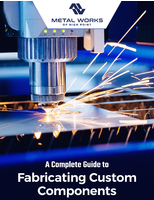DC to DC Power Supplies (Converters)
Micro DC-DC Converters reduce noise, board space occupation.
Press Release Summary:

Measuring 2.5 x 2.0 x 1.1 mm (max), LXDC2HL series buck converters work with 2.3-5.5 V source, such as Li-ion battery, and use ferrite multilayer substrate that incorporates power inductor. Length of connection between controller IC and inductor is close to zero, and efficiency is 88% typ. Across 7 models, output voltages range from 1.2-3.3 V with max load currents from 600-300 mA. All have synchronous rectifier topology, PFM/PWM auto-select function, and 3 MHz switching frequency.
Original Press Release:
Murata Begins Mass Production of Micro DC-DC Converter Device Series Which Saves Space and Reduces Noise
Hoofddorp, Netherlands: Murata has begun mass production of its new Micro DC-DC converter device series, which will reduce the board space used by buck converters in battery powered devices. All items in this series measure 2.5 x 2.0 x 1.1mm (maximum) making them significantly smaller than discrete solutions. Murata's entire DC-DC solution for portable devices, including the Micro DC-DC converter device, occupies less than 10mm2 of board space, less than half the footprint of the same solution implemented with discrete components.
The LXDC2HL series of tiny buck converter devices are designed to be used with 2.3 to 5.5V from a source such as a Li-ion battery. The devices use a newly developed ferrite multilayer substrate which incorporates the power inductor, enabling very low levels of noise since noise from the power inductor is confined within the ferrite substrate. Length of the connection between the controller IC and the inductor is close to zero, also helping reduce noise emissions. Ferrite multilayer substrate technology is a process whereby up to 50 layers of different ferrite materials are pressed together to create embedded components and make a three-dimensional circuit within the substrate of the device, despite the tiny thickness of the substrate.
Seven models have been launched with output voltages of 1.2V, 1.35V, 1.5V, 1.8V (maximum load current: 600mA), 2.5V (500mA), 3.0V (400mA) and 3.3V (300mA). Typical efficiency for these parts is 88% (Vout: 2.5V).
All models have an input voltage range of 2.3 to 5.5V and an operating temperature range of -40 to 85ºC. This series has a synchronous rectifier topology and its PFM/PWM auto-select function contributes to its overall efficiency. Switching frequency is 3MHz.
For further information and reader enquiries:
Aya Tonooka, Murata Electronics (UK) Ltd., Oak House, Ancells Road, Ancells Business Park, Fleet, Hampshire GU51 2QW , United Kingdom
Tel: +44 (0) 1252 811666 E-mail: ayatonooka@murata.co.uk
Fax: +44 (0) 1252 811777 Web: www.murata.eu
Agency contact:
Robert Huntley, Publitek Limited, 18 Brock Street, Bath, BA1 2LW, United Kingdom
Tel: +44 (0) 1225 470000 E-mail: robert.huntley@publitek.com
Fax: +44 (0) 1225 470047 Web: www.publitek.com
About Murata
Murata is a leading manufacturer of electronic components, modules, and devices. The complete range of this Ceramics Technology house includes ceramic capacitors, resistors/thermistors, inductors/chokes, ceramic resonators, buzzers, sensors and EMI suppression filters. Whilst the company gets 40% of its revenue from its ceramic capacitor products, it is also the world leader in Bluetooth & WiFi Modules, and a key manufacturer of power supplies. Murata also designs and manufactures mobile handset antenna families, piezoelectric actuators for fuel injection systems, short focal length ceramic lenses and speaker products.
Established in 1944, Murata is headquartered in Japan and has European offices in Germany, the Netherlands, the UK, Switzerland, Italy, France, Spain, Denmark, Sweden, Finland and Hungary.
For more information on Murata, please visit: www.murata.eu




